
La Soufriere
Every year, hundreds of people make the climb to look at the great wonder of the La Soufriere volcano, oblivious to its historical past. It is a beauty to behold when you first set eyes on it but it so easy to forget how devastating this sleeping giant can be when it awakes.
My first visit to see the volcano was in 1968. I was in the boys scot at the time and we went camping in Chateaubelair for One week. Godfrey Thom was the scot master at the time. Other members that I can remember were Arnaville, Gideon Charles and Kelson Mcbarnet, (Ilay). At the end of the camp we had to walk back from Chateaubelair to Georgetown, which meant that we had to go pass Richmond and Wallibou then trek inland towards La Soufriere then on to Georgetown. That was a real exciting experience. My second visit was in 1973, at that time the crater was full of water, like a big swimming pool. People would sometimes have a swim in the water. My last and most exciting trek to Soufriere was in 2008 when I actually climbed into the dry volcano. All the water had evaporated by then leaving a mountain of toasted rubble.
The only undisputed piece of evidence that you could produce to prove that you had actually been to the top of the volcano was the Soufriere grass/ fern. This plant only grew near the volcano and come Easter time many visitors returning from the hills would wave their Soufriere grass as if to say "Look at me, me bin ah Soufriere".
You really have to experience the feeling of looking into the huge dome for yourself, it is something that you will never forget. The climb up to the volcano is not as daunting as it was Twenty years ago. Improvements have been made to the foot paths and some facilities are at the Dry River Bed for those who do not fancy the climb. My only advise to anyone who is going to the top is to carry plenty of liquids and a spare T shirt. Take your time, its easy to get excited and race up the hill, if you do you can easily get out of breath then you will struggle to get to the top. If you do make it to the top stay well away from the edge of the crater it can be quite breezy at times and fog can appear at anytime.
This recollection of visiting Soufrierewas submitted by Patricia Brown
"I made my first trip when I was about 10 years old. Boy I was sooooo tired that night. After that first time, I made the trip every year. I remember folks you didn't even know would be eating their picnic lunch at the river bed, and even if they didn't know you, we would all be like one family, folks would be sharing their lunch and just enjoying the time there. Then we would start our journey up the hill.
On our way down, we would always make sure we had pieces of what we called "sufray grass" with us, that told every one back in G/town that you actually went up the hill, because that was the only area where that grass grew. Of course we never said the word correctly, we never called it La Soufriere, it was always "sufray" remember?
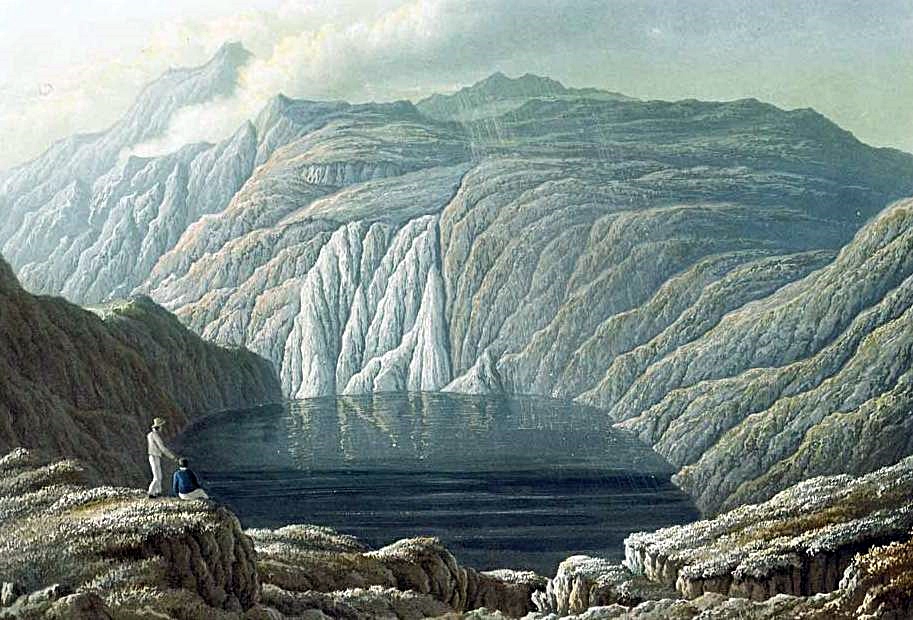
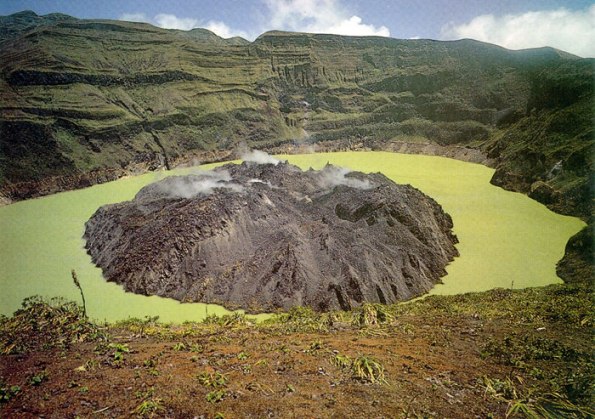
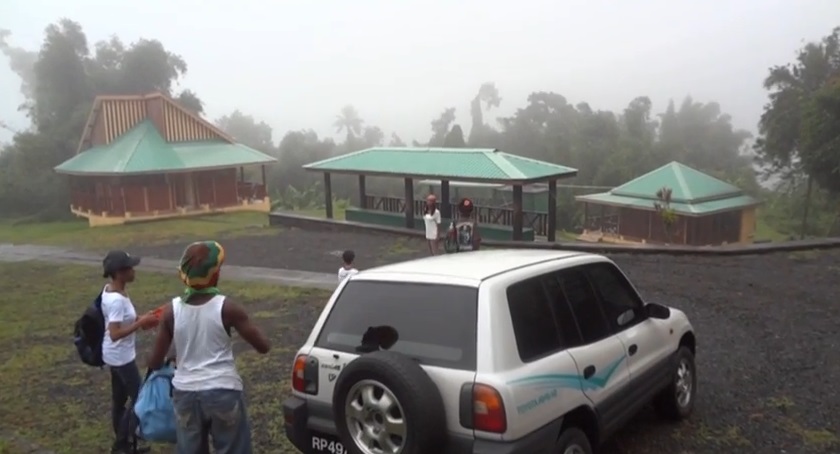
The 1979 Eruption and its Effect on the People
The first historical eruption of the volcano took place in March 1718, and the 1812 eruption produced major explosions. Nearly a century went by before the next eruption, a hugely destructive event that began in earnest on 7th May 1902. Much of the northern end of the island was devastated by this major eruption and approximately1680 lives were lost.
After 1903, St Vincent returned to a state of quiescence which wasn’t disturbed until 1971, when a remarkably quiet eruption built a new lava dome within the flooded crater of the volcano. The lake was then largely ejected during a series of explosive eruptions in 1979 and the dome was replaced with another.
The 1979 eruption began with only a very short period of unrest, starting with a strong local earthquake on April 12. Eruptive activity began with a series of short-lived but violent explosions and that lofted a series of ash plumes, high into the sky on Good Friday, April 13, 1979. This heralded two weeks of vigorous activity that peaked with an 18 km high plume on April 17, and ended, with the cessation of measurable seismicity on April 29. After this, the eruption switched to the quiet extrusion of lava, slowly forming the dome that still sits in the crater today.
The 1979 eruption caused much disruption, with 20,000 people evacuated to shelters.
At dawn on the 13th of April 1979 the Soufriere Volcano in northern St. Vincent erupted. Six hours earlier the Government of St. Vincent had been warned that a highly abnormal situation existed and that an eruption was likely in the coming hours. Evacuation of the areas north of the Rabacca and Wallibou rivers started almost at the same time as the first eruption and was completed within 12 hours. Later Chateaubelair and Georgetown also had to be evacuated. A total of around 15,000-20,000 people (more than 15% of the total population) were relocated to the already densely populated south.
The first eruptions were so powerful that it caused ash to fall on Barbados, 180 km to the east, on the afternoons of 13 and April. The volcano remained active into early June. At each eruption the mushrooming clouds reached up to 8,000 feet, and were readily visible from Kingstown. Each explosion was followed by the deposition of a thin layer of ash over the entire island, heavier in the northern part. Ash would fall for several hours, resembling light snow. It was irritating to the eyes and mucous membranes. No direct mortality was attributed to these eruptions, but a rumor about deaths due to traffic accidents associated with the evacuation could never be substantiated or dismissed on firm grounds. Several patients with fractures suffered during these accidents were hospitalized.
Evacuation Centres
The number of evacuation centres reached fifty-seven during the first few days and Increased later to sixty-three. The total population in the centres was estimated to be 15,000 with 3,000 more displaced persons living in private homes. Evacuation centers were started in schools, churches and government buildings. These were not built to serve as evacuation centers and did not have adequate facilities. At the beginning of the disaster relief effort two epidemiologists from the Caribbean Epidemiology Centre (CAREC) made a quick survey of some of these centers to identify major problems that needed to be solved. 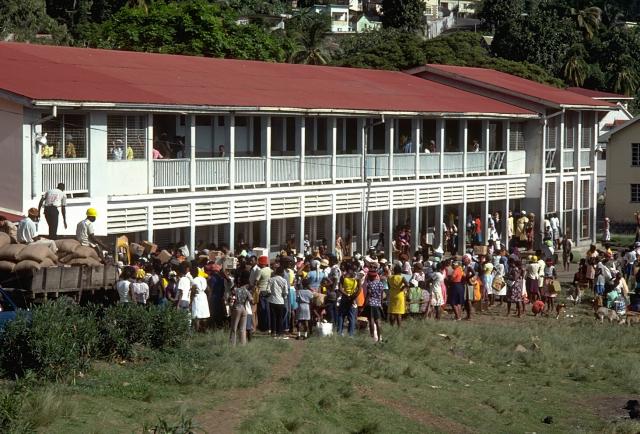
Sanitation problems were noted in most of the centres. Close to a thousand refugees were living in one centre. Water was available but through a limited number of outlets, and facilities to boil water, if necessary, scarcely existed. Insufficient or unusable toilets and/or pit latrines resulted in uncontrolled defecation in the immediate vicinity of the center. Personal hygiene and garbage disposal also caused problems mainly because of lack of facilities. For food preparation widespread use was made of volunteer personnel unaccustomed and unprepared for mass catering. Everyone was therefore very much afraid of outbreaks in these evacuation centres. Fifty-three percent of the population in the centres was younger than fifteen and one fifth of these was under two.
One of the evacuation centres was Richmond School pictured above..
The image below shows the changes to the Soufriere hillside after the 1979 eruption.

Your Recollections of the 1979 Volcano Eruption.
The volcano eruption in1979 is still fresh in many of our minds, as if it was yesterday according to some of you. It was unexpected and caught many by surprise. I posted a photo of a lone vehicle with Three masked persons traveling though the ash covered road in Georgetown, and asked for your recollection of that awful day. I was blown away by the responses and interactions. So far, almost Eight and a half Thousand (8,424) persons have viewed this post since it was posted on the Georgetownsvgrevisted, Facebook page Four days ago. It has been shared 64 times and over Fifty of you shared your stories of that awful day.
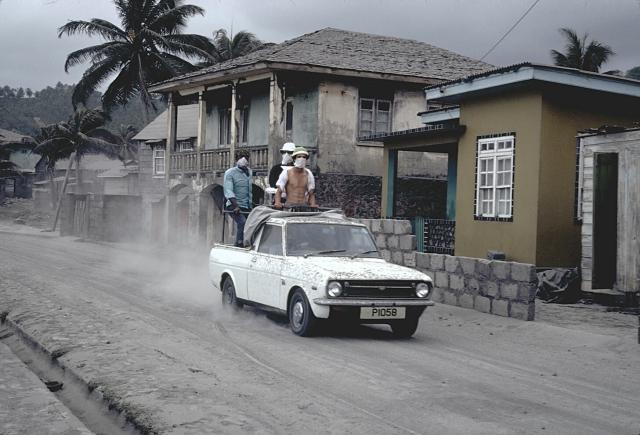
Simone Weekes Phillips: "I remember my Mom waking us up and covering our noses so we won't inhale the ash.... we were living in New Montrose...I was 7 yrs old."
Cassandra Layne: We had been in SVG for almost 4 months when the eruption occurred. You learned a lot about people. Many folks from Georgetown who had to stay with others in other parts of the island experienced trying times. But God was and still is good.
Vicki Crichton: Wow! I remember this like yesterday. I was a Teacher at Georgetown Govt. I left home the next year. My stubborn father was one of the last ones to leave Georgetown after a hot rock fell on our jeep and pierced a hole in it. We stayed at our house in Arnos vale, many sleepless nights, I worked with the evacuees in the area and at nights a group of us stationed at CSY Caribbean sailing yachts, will go sailing. It was a trying but fun time that I could never forget.
Rhonda Henry: I was little but I remember clearly how scared I was the constant rumbling of the volcano and seeing the people coming down from "over the river" with ash on them. Wow!
Carl Blencowe: I was learning to drive early that morning in Ft Charlotte when we saw the first mushroom plume. Later that morning some friends and I drove out to Sandy Bay to get closer to the action and check up on some people we knew. One of the things that struck me and I commented about was the first set of evacuation trucks we started seeing was full of men. Where's the women and children aren't they supposed to be first? Watching the eruption was amazing. Later that night the show Mother Nature put on was incredible. 3 weeks later I climbed the mountain on the Leeward side with a fact finding group. Looking into that crater was scary, and exciting all at once. The colors in that boiling pot amazing.
Jasmine Jackson: I remember my mom waited until the last minute when stones started falling before she left. I remember being thrown onto a government truck in the haste to get out. Clothes tied up in a sheet. I remember folks crying as we were leaving. We took refuge at the Belair government school!
Brabara Deroche: Henry recalls going to your mother. He met her sweeping her yard. He told her that Soufriere was coming. She told him "Boy don't talk no foolishness, Soufriere ain't coming." So he left her and went to the police station and join the Orange Hill villagers on the truck. One day sometime later he was at Stubbs he saw your mom on the government truck "she said boy stones nearly kill me."
Wiler Kay Lewis: I was born 2 months after the eruption but my mom told me she was admitted to the hospital when it happened. They said she had frighten pain.
Nikki Maule: I was 7 years old then.I remember people from Fancy and Owia were living in our church Mt. Coke Methodist, and in my school Stubbs Primary school. I remember eating powdered milk and sugar supplied by the Governmentrelief agencies. I enjoyed playing with the children who were evacuated and living in the church. At the time we were living at Chapel Hill just across from the Mt. Coke Methodist church. I made some lasting friendships one of them Mavis Lavia who I speak to, to this day.. I also remember wearing handkerchiefs tied around my nose in order not to inhale the ashes...I totally enjoyed not being able to go to school..it was a fun time for me.
Sharon Charmine Shallow "I remember waking to the falling of stones on the house. I bawled. My sister ran under the bed to hide because her sister school went up there the day before and they stoned it. Daddy told her that the stone will back and hit her"
Lystra Layne: I remember my grandfather, Wilfred Thomas, coming down from Orange Hill with his suitcase on his head shouting at us from the street outside of our house that the volcano was erupting. Pandemonium descended on our house! What I found amazing that morning is how quietly and orderly the indigenous people (Caribs) left the northern part of the island and walked through the towns heading south without creating a panic. It was imperative that they got past Rabbaca Dry River before the lava started flowing
Lilian Layne: l was 16 years old my family was about the last to leave Owia. My mom was crying we were quite scared it was our second time to pack up and leave every thing that you own and to be treated like you come from no where. The first time we was at the Stubbs Primary School, the second time was at the Belmont Government School. That was the worst, it really is history worth remembering.
Nickal Adams:I remember we walk till we reach Barney valley, Beltoe George, wood bus past full if u see men behind they cock up. Then a Government truck came and we fetch it. The part that scare me is when the volcano blow the ball of fire wall rolling people start screaming I don't even know if is in the sea it went but that was scary.
Lislie Hodo: I had just left SVG. But remember talking to dad about the fear and later the article he wrote for the Vincentian, I believe it was titled.The Thing that Split Good Friday in two.
Dawne James: Boy I was 7 yes old my ten toes bursed up walking from Peto to Bagga.
Tricia Reddock: I was 10. There was a mushroom looking cloud hanging out over the Kingstown area. There were lightening sparks. It looked amazing, terrible and beautiful all at the same time. Ashes fell like snow. It was surreal.
Ingrid Lewis: I could never forget it was the week-end of my baptism, my new birth. I went to help the people who came to MSS. It was a pleasure to help. As I stand in my yard the ashes were falling like rain, we were all scared.
Cindy Henville: I remember the eruption, this was when my grandmother passed away... The Saturday morning....
Leslie Pitt: I was at a dance in High Wycombe with my wife when we got the news. I can recall it was a Vincy party the hall was full with crying and praying people, the music stopped and party end.
Rosalie Parris: I was prégnent with my last son it was terrible.
Dian Crozier: "I remember the morning when the news broke I looked outside saw the people walking from the north. I rushed inside grab a pillow case throw some clothes in it my cousin came wit his truck and off we went. Later that day we came back and went over to Rabbaca,suddenly we saw a ball of fire from d mountain d driver panic and drove off without us we began running and bawling stop! stop! he didn't stop until he got to Langley Park bridge that was scary."
A big thank you to Arnold Da Silva, for some rare photos of Soufriere,from the 1970s.
